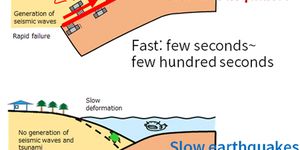False Claim Attacks on Cyber-Physical Systems: Understanding and Mitigating Risks
The National Science Foundation’s Secure and Trustworthy Cyberspace program recently awarded a research grant worth $599,947 to the University of Oklahoma (OU) to investigate roundabout tactics on America’s infrastructure and cyber-physical systems originating from malicious online activity. This comprehensive study will help identify the potential of weaponizing disinformation, frequently called “fake news”, and what steps can be taken to mitigate the associated risks to infrastructure.
"We’ve seen an increase in the number of incidents of false claims in recent years, and studies suggest that a majority of online users tend to be initially fooled by fake news,” said Dr. Kash Barker, who is a Professor in the School of Industrial Engineering at OU, and principal investigator of the recently awarded study. “A potentially over-the-horizon problem could occur when these incidents are weaponized by an adversary against America’s infrastructure networks.”
For the study, the researchers will analyze both the links and potential threats between critical infrastructure (e.g., utilities) and the information layer (e.g., social media networks), along with collaborating with industry partners to gain real-world knowledge of potential risks and threats, as well. This collaboration could potentially include establishing outreach services for undergraduate and graduate students seeking career opportunities in cyber-physical systems education and research.
Video discussing a 2018 study from the Massachusetts Institute of Technology examining the spread fake news on Twitter.
Discussions regarding how fake news could adversely impact infrastructure has grown in recent years, with recent studies being published in New Media & Society, Scientific Reports, and Telematics and Informatics, the last of which examined how fake news could adversely impact natural disaster situations.
“We can imagine a weaponized false claim attack through the information layer that causes humans to respond in a way that adversely alters the performance of the physical layer,” said Dr. Barker. “To combat these attacks and ensure secure cyber-physical systems, we must be able to offer a plan for integrating our research with the educational mission at our universities.”
What new discoveries will researchers make regarding fake news and its potential impact on infrastructure in the coming years and decades? Only time will tell, and this is why we science!
As always, keep doing science & keep looking up!
Sources: EurekAlert!, Wikipedia, University of Oklahoma, New Media & Society, Scientific Reports, Telematics and Informatics








